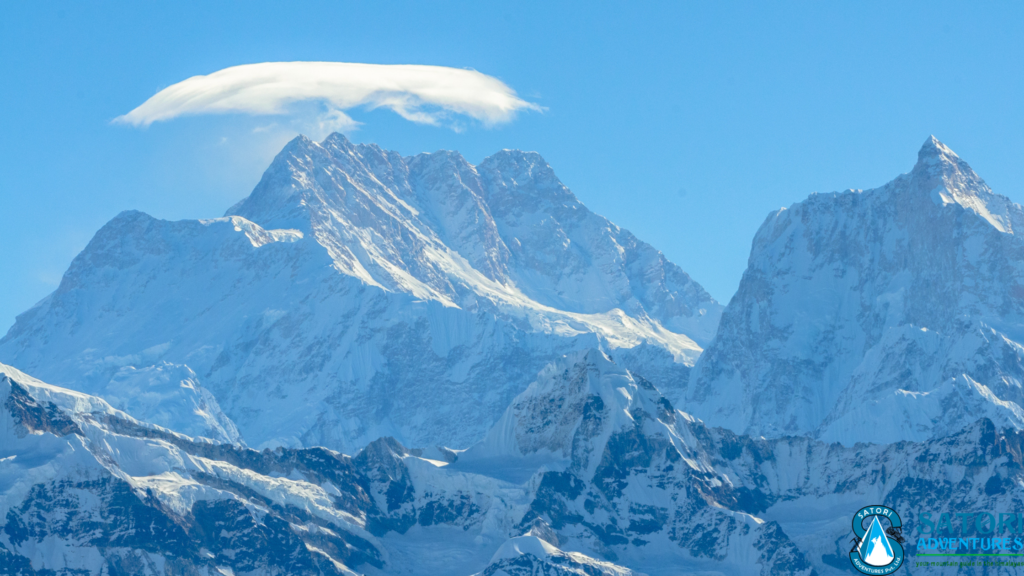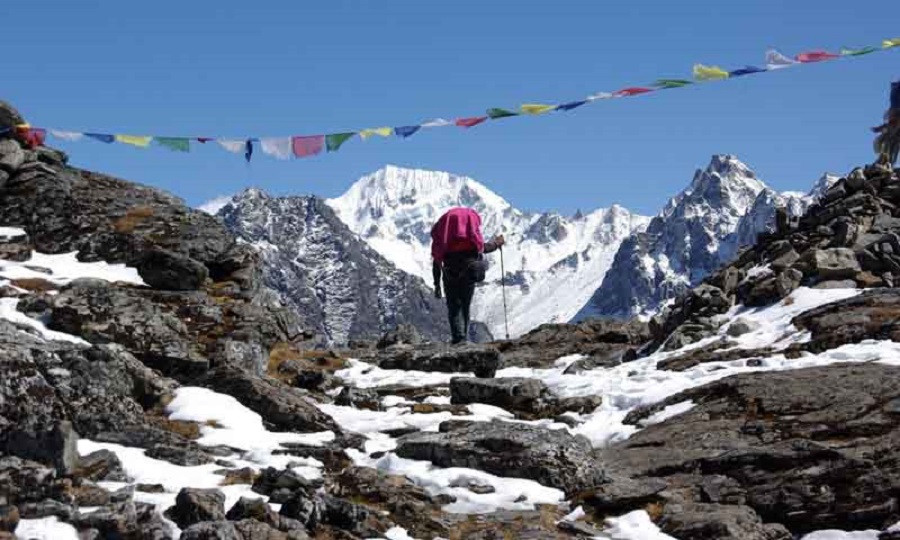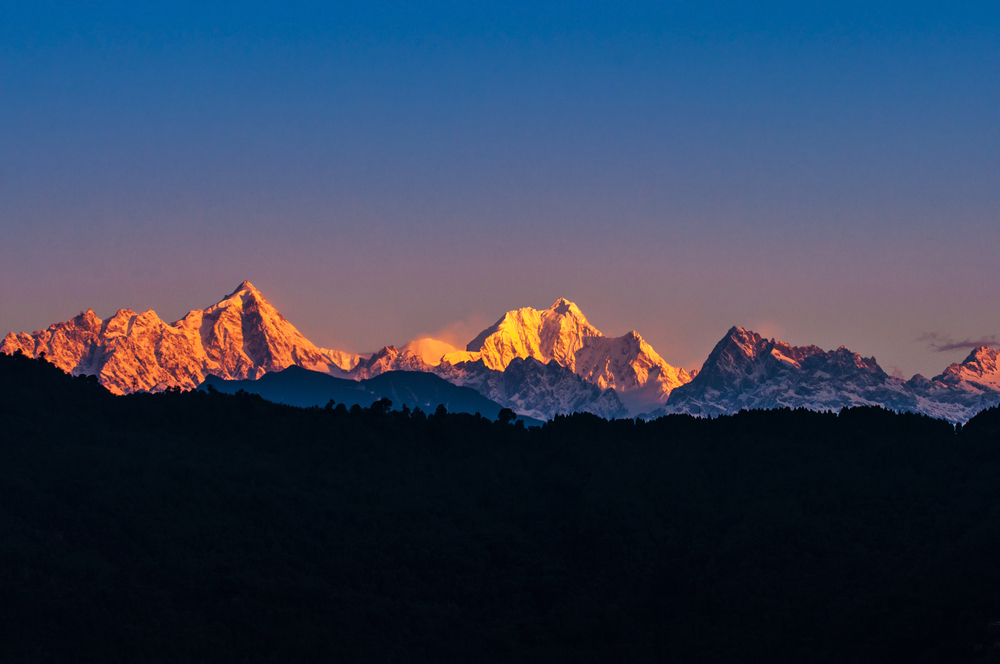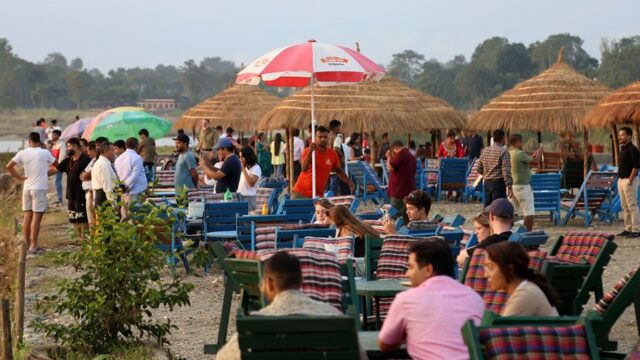In recent years, Kanchenjunga, the third-highest mountain in the world, standing at an elevation of 8,586 meters, has been gaining remarkable attention among both domestic and international tourists. Located in eastern Nepal, this majestic Himalayan peak is not only a symbol of natural grandeur but also a growing destination for adventure enthusiasts seeking trekking, mountaineering, and high-altitude exploration.
Kanchenjunga has become particularly attractive to foreign climbers and thrill-seekers. A notable example of this surge in popularity was the recent successful expedition undertaken by a group of 10 climbers, including five foreign nationals. These climbers, hailing from countries such as the United Kingdom, Iran, and Kosovo, along with a dedicated team of Nepali Sherpas, achieved the summit of Kanchenjunga under the guidance of Seven Summit Treks. According to Mingma David Sherpa, Director of Elite Expeditions in Kathmandu, an additional 63 climbers and guides are currently stationed in the region for future ascent attempts, underscoring the mountain’s growing prominence.
Kanchenjunga
Not only has the peak itself become a magnet for adventurers, but the base camps, both southern and northern, have also seen a rise in footfall. The southern base camp, accessed via the village of Yamphudin, has drawn 44 foreign visitors just since the beginning of April. These include 16 Americans, 15 Indians, five Russians, four Israelis, two Britons, and two Dutch nationals, according to tourism assistant Suryaman Rai of the Kanchenjunga Conservation Area Management Council’s Yamphudin office.
On the northern side, the influx has been even more significant. As per tourism assistant Tashi Tenzing Sherpa at the Ghunsa tourism checkpoint, more than 360 foreign tourists have visited the northern base camp this year alone. This figure is an encouraging sign that the region is firmly establishing itself as a sought-after trekking and mountaineering destination.

Kanchenjunga’s two primary base camps offer different experiences and levels of access. The northern base camp, known as Oktang, requires a four-hour drive from Taplejung’s district headquarters, Fungling, to Japantar, followed by a three-day trek to Ghunsa village. From Ghunsa, an additional three-day hike leads trekkers to Oktang, situated at an altitude of 5,200 meters. This route is lined with basic yet welcoming accommodations, including hotels, homestays, and rest points that ensure a comfortable experience for visitors.
The southern base camp, Pangpema, is equally captivating. From Fungling, it takes about seven hours by vehicle to reach Yamphudin village, followed by a three-day trek to reach Pangpema, located at an elevation of 4,800 meters. Along this route, too, local hospitality in the form of homestays and guide services enhances the journey, supported by the Kanchenjunga Conservation Area Management Council.
Climbing Kanchenjunga, however, is no easy feat. Unlike some of Nepal’s other 8,000-meter peaks, Kanchenjunga is regarded as technically one of the most challenging. The route to the summit involves establishing multiple camps, Camp I, II, III, and beyond, with climbers requiring several days at the base camp for acclimatization. The presence of experienced guides, high-altitude workers, medical professionals, and logistics teams is essential for any successful ascent. The unpredictability of weather, thin oxygen levels, and the risk of avalanches make the expedition a true test of endurance, planning, and courage. Tragically, just last week, a French climber lost his life during one such expedition, highlighting the extreme risks involved.

Beyond its mountaineering allure, Kanchenjunga is a treasure trove of natural and cultural wealth. It lies within the Kanchenjunga Conservation Area, which is rich in biodiversity and home to unique flora and fauna. The region also boasts a rich cultural heritage, with ethnic communities such as the Limbu, Sherpa, and Rai actively participating in tourism activities. Locals contribute through homestay operations, guiding services, portering, mule transport, and the sale of traditional handicrafts. This grassroots involvement has led to increased income and improved livelihoods, making tourism not just an external attraction but an internal driver of sustainable development.
Despite its growing appeal, Kanchenjunga still faces infrastructural challenges. Improved signage along trekking trails, the addition of first-aid posts, enhanced rescue services, and better communication networks are urgently needed to unlock the full potential of the area. Experts believe that with coordinated efforts and investment in tourism infrastructure, Kanchenjunga can emerge as one of Nepal’s premier adventure tourism destinations, comparable to Everest and Annapurna.
The road ahead calls for a collaborative approach among government agencies, conservation bodies, tourism entrepreneurs, and local communities to sustainably develop this high-altitude marvel. As more explorers set their sights on the snowy heights of Kanchenjunga, this eastern Himalayan gem is set to shine brighter on the global tourism map.






